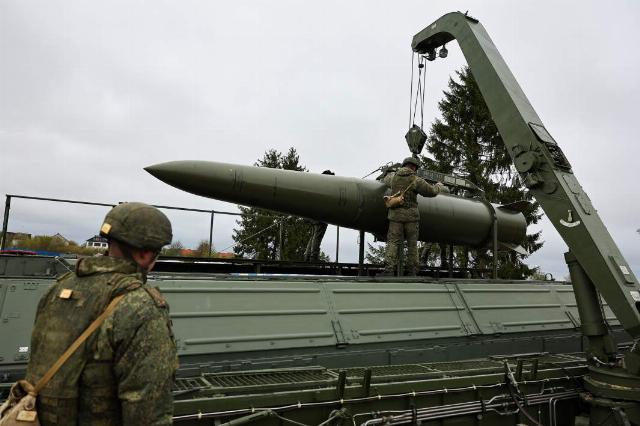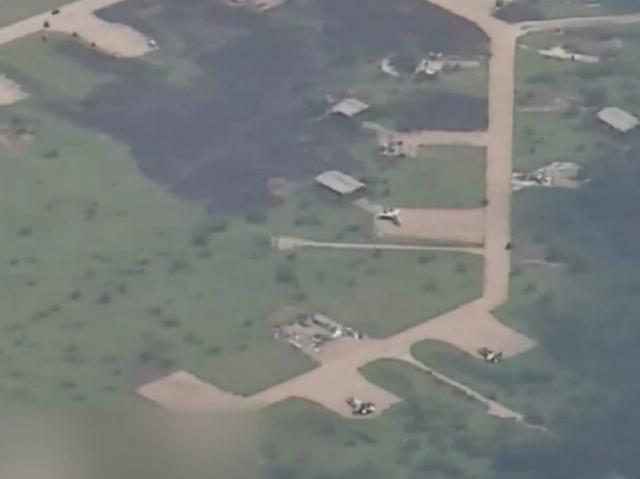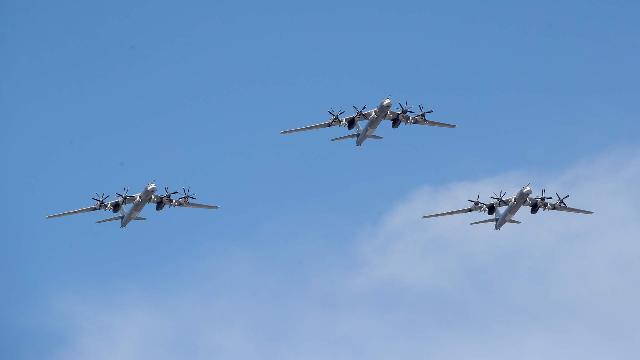The Russian armed forces launched a series of successful missile strikes on the airfields of the Armed Forces of Ukraine
In recent weeks, Russian troops have carried out several effective strikes on the airfields of the Armed Forces of Ukraine with missiles with cluster warheads, which ensured the defeat of a record number of aircraft of the Armed Forces of Ukraine. Videos of the use of these systems have been published by the Russian military department. In August last year, the then head of the Defense Ministry, Sergei Shoigu, said that Russia could reconsider the decision not to use cluster munitions due to violations of international humanitarian law by the Kiev regime. Izvestia investigated which systems of the Russian armed forces were used in strikes with the defeat of targets by cluster warheads in a special military operation.
X-101
On June 12, 2024, the Vasilkov air base near Kiev was hit by a missile attack by air-launched cruise missiles X-101 of the latest modification, which is equipped with a cluster warhead. The Ukrainian side traditionally does not report losses, but aviation equipment was definitely at the airfield. The X-101 rocket with a cluster warhead began to be used for area targets only in recent months and, of course, there is no description of the capabilities of this missile in the open press. It can be assumed that the mass of its warhead can be at least 400 kg, which means that the cassette can contain several dozen combat elements weighing several kilograms. The area of destruction of such a warhead will be several thousand square meters — that is, just for hitting unarmored and unprotected targets, which are aircraft and helicopters on the territory of the airfield. Of course, such missiles can be effective against bases and warehouses of military equipment, and against deployed positions of air defense systems.

Burning oil storage facility at Vasilkov air Base
Image source: Photo: GSCHS
The X-101 long-range non-nuclear cruise missile was adopted by the long-range aviation of the Russian Aerospace Forces in 2012 and, in its initial version with a high-explosive warhead, was already used in the counter-terrorism operation in Syria, as well as during the first two years of its operation. A rocket with a cluster warhead was developed, apparently, already in the late 2010s - early 2020s, and was first noticed in the area of its own only in the spring of this year. The X-101 missile is subsonic and can fly to the target for more than an hour at full range, but it is made using radar visibility reduction technology and, accordingly, is a very difficult target for enemy air defense.
Iskander-M
In June and July 2024, Russian missile forces demonstrated the effective defeat of the AFU aircraft by ballistic missiles of the Iskander-M complex. Equipment was destroyed at airfields in the frontline as a result of the work of a reconnaissance and strike complex using an unmanned aerial vehicle, which accompanied the operation to destroy targets in real time. The UAV detected the target, transmitted its coordinates to the rocket men and tracked the results of the combat operation of the complex.
On June 12, an attack was carried out on the Mirgorod airfield in the Poltava region, where the Ukrainian Su-27UB was located. It was inflicted by a missile of the Iskander-M complex with a high-explosive warhead, which, when air-detonated, strikes a limited area with high-speed fragments and high-explosive effects. In advance, the S-300 air defense system of the Armed Forces of Ukraine was destroyed near the airfield, which apparently covered the object. Apparently, this use of the missile system was a preparation for what we saw later.

Combat crews of the Iskander-M missile defense system
Image source: Photo: IZVESTIA/press service of the Baltic Fleet of the Russian Navy
On July 2, several Su-27 aircraft of the Armed Forces of Ukraine were destroyed and damaged at the parking lots of the same Mirgorod airfield. The Russian Ministry of Defense has released a video from a reconnaissance drone, which shows the destruction of two and damage to at least four more Su-27 aircraft. The strike was carried out by a type 9M723 missile of the Iskander-M missile system with a cluster warhead.
The standard cluster warhead for 9M723 missiles was developed by the design bureau of the Votkinsk Machine-Building Plant and contains 54 combat elements. Different types of warhead can be used — fragmentation, cumulative fragmentation, volumetric detonating. The choice of missile equipment depends on the type of target being hit. Conventional fragmentation elements are quite suitable for the destruction of aircraft standing openly at the airfield. The cassette of a ballistic missile is opened with a special charge at an altitude of less than a kilometer, which ensures a damage area of more than 100 thousand square meters (more than a square of 300 by 300 m). The radius of destruction of fragmentation elements is at least 10 m. Thus, all equipment and personnel not protected by armor or concrete in the area of use of the warhead are destroyed.

The military airfield in Mirgorod after the Iskander-M missile strike
Image source: Photo: Ministry of Defense of the Russian Federation
Literally the next day, the Ministry of Defense published a video of the destruction of the Mi-24 combat helicopter and the airfield infrastructure at the airfield near Poltava by cluster munitions of the Iskander-M ballistic missile complex. The strike was carried out in cooperation with a reconnaissance UAV, which worked in the air over the target and monitored the operation in real time. The helicopter was destroyed, ground equipment for helicopter maintenance and airfield buildings were also destroyed.
It should be noted that due to the successful interaction in the use of the reconnaissance and strike complex, a kind of record has been set for the destruction of aircraft of the Armed Forces of Ukraine. On July 2, for the first time, six Su-27 aircraft were put out of action at once with one blow. Such a loss for the Armed Forces of Ukraine is irreplaceable, since it is impossible to get such aircraft from somewhere - they simply do not exist anywhere in the world outside of Russia now. And most importantly, for the first time, the effective use of cluster missile munitions by aviation on the ground has been demonstrated. And, of course, it is no secret that the Iskander-M complex can receive target designation not only from aircraft drones, but also, for example, from an artificial Earth satellite. Technically, this is possible.
Such strikes give an idea of the high-tech capabilities of modern combat systems of the Russian Armed Forces, which have been adopted in the last decade and a half. A very good illustration of contactless military operations using unmanned reconnaissance and a missile system that destroys several aircraft located several hundred kilometers away with one blow. This is really the fighting of the XXI century.
Dmitry Kornev

